Understanding ERC 404 Tokens
 Dhruv Srivastava
Dhruv Srivastava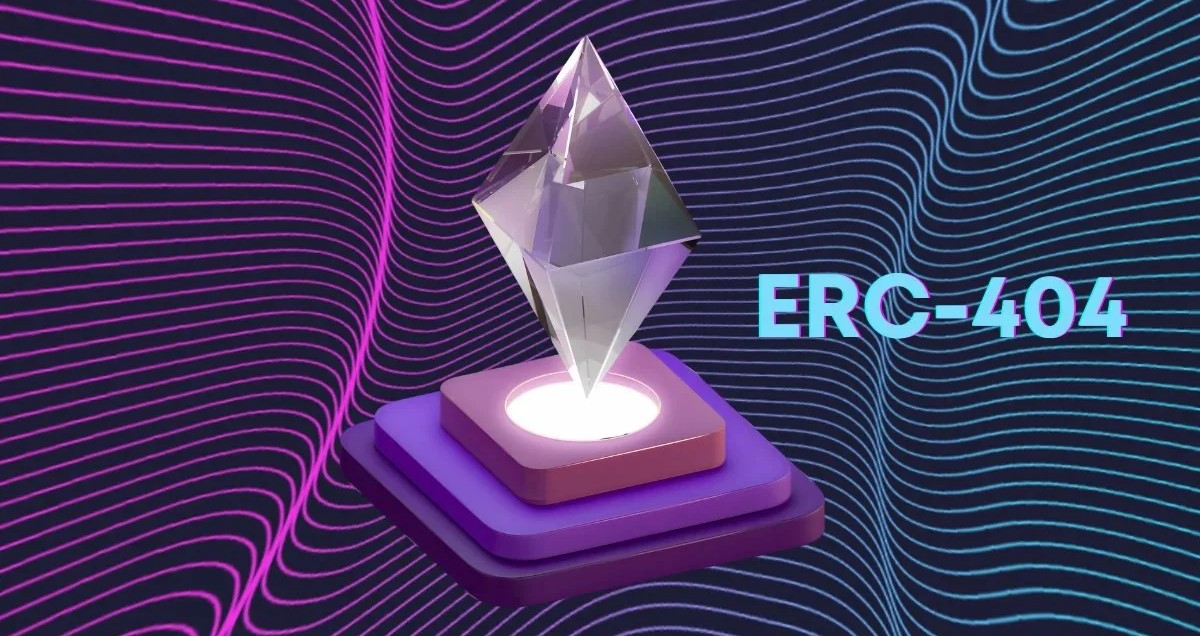
About ERC 404 Tokens
Ethereum, the second-largest blockchain by market capitalization, has played a pivotal role in advancing blockchain technology and cryptocurrencies. A key factor in its success lies in its flexibility, which is enabled by smart contracts and programmable code that allows the creation of diverse applications and decentralized financial (DeFi) products. Token standards are blueprints for creating these tokens, each with specific functionalities and purposes. Among the latest innovations sparking excitement is the ERC-404 token standard, promising a unique blend of fungibility and non-fungibility.
The ERC-404 is an experimental type of token standard that is unique in terms that it allows a single NFT to be owned by multiple wallets, thus creating a precedent for various use cases in the future. The ERC-404 token standard is designed to merge the characteristics of fungible (ERC-20) and non-fungible tokens (ERC-721) into a hybrid form, allowing for both unique and divisible asset representations on the blockchain.
The Backstory of ERC-404
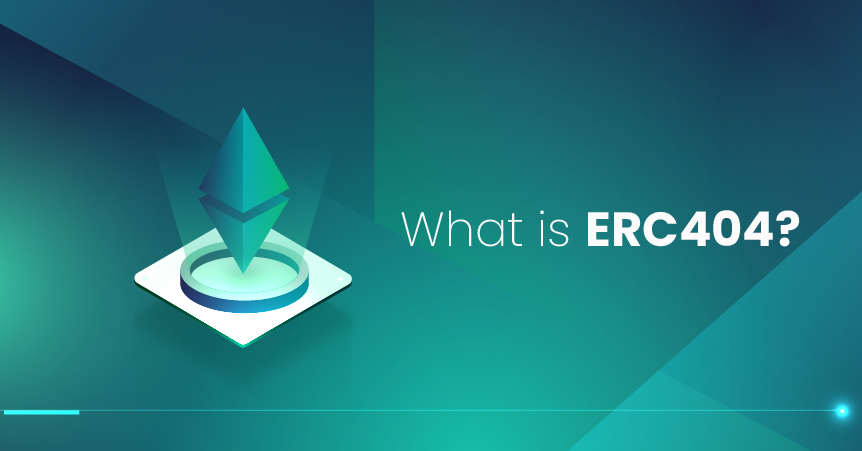
Developed by pseudonymous creators ctrl and Acme, ERC-404 is an experimental token standard and an innovative approach that combines the features of ERC-20 tokens (fungible, divisible like money) and ERC-721 tokens (non-fungible, unique like NFTs). The duo have stated that their goal is to advance the creation of NFTs that are endowed with native fractionalization, liquidity and encourages some aspects of trading/engagement to farm unique trait sets. It introduces the concept of semi-fungible tokens, allowing individuals to own fractions of a single NFT. This unlocks exciting possibilities for fractional ownership of valuable digital assets or real estate, increased liquidity for NFTs, and novel DeFi applications. Imagine owning a piece of a rare digital masterpiece in the form of a fractional NFT—ERC-404 makes it possible, opening doors to fractional ownership, enhanced NFT liquidity, and groundbreaking DeFi applications.
This hybrid functionality aims to provide versatility, native liquidity, and programmable scarcity to digital assets on the Ethereum blockchain. The ERC-404 standard, although unofficial and experimental, facilitates fractional ownership of NFTs, opening up new avenues for experimentation and trading in the NFT space. It allows for a unique blend of fungibility and non-fungibility within a single token standard, offering the potential for innovative applications and utility in digital asset management and trading.
NFTs are generally sold as a whole and not in small fragments, as they are not meant to be divided. ERC-404 bypasses this by using token mint and burn methods to allow NFTs to be transferred in fragments. Essentially, if tokens are linked to an NFT, when someone buys a token, the NFT is minted to the user's wallet. If the user sells a fraction of the token, the NFT is burned. If the user has several fractions to complete a token, a new NFT is minted. This technology allows a certain level of experimentation with NFTs and their transfers with the goal of ERC-404 is to allow native fractionalization.
Insight about ERC-20
Since the ERC-404 Token combines ERC-20 and ERC-721 Tokens, understanding a bit about the ERC-20 Token will help you better grasp the ERC-404 Token. The ERC-20 protocol is like the foundation of tokens on Ethereum. It's a set of rules that determine how tokens operate on the Ethereum Blockchain, ensuring they are compatible and consistent. This compatibility helps them easily connect and work across different parts of Ethereum, like apps and services. These guidelines are crucial for creating and managing tokens in the Ethereum ecosystem.
ERC-20 tokens emerge through Smart Contracts, which are autonomous codes on the Ethereum blockchain. These smart contracts follow the ERC-20 rules, defining essential parameters like the token's name, symbol, supply, and decimal places. Once deployed, these tokens serve various purposes, from digital currencies to representations of assets or utility tokens.
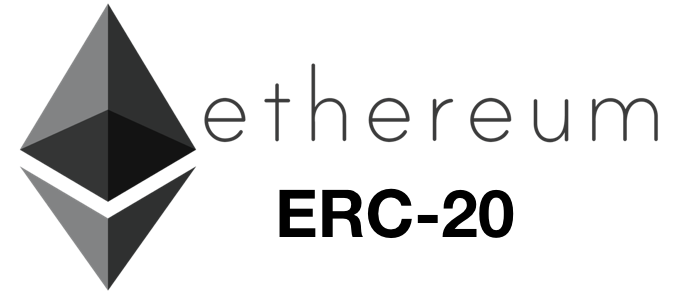
Smart contracts are the creators behind ERC-20 tokens' functions. Think of them as digital agreements that execute transactions without intermediaries. They encode the rules set by the ERC-20 protocol, defining the key features of these digital assets. Beyond their technical role, ERC-20 smart contracts enable the tokens to work smoothly within the Ethereum ecosystem. They allow easy interaction across different platforms, supporting automated financial operations, enhancing token adaptability, and ensuring they work as intended. ERC-20 tokens are a type of digital money made on Ethereum using a set of rules called ERC-20. These tokens are consistent and can be easily exchanged because they hold the same value. They can be used in many wallets, exchanges, and apps on Ethereum.
Development of ERC-404
ERC-404 is a new standard that enables experimentation with NFT fractionalization and transfers. It aims to give developers the ability to create and distribute fractionalized NFT collections for open trading and various innovative applications. This standard addresses limitations of existing NFT standards, which typically confine NFTs to a single wallet and owner.
Unlike the non-fungible ERC-20 and ERC-721 standards, ERC-404 introduces semi-fungible assets that blend key features of both. It overcomes the traditional indivisibility of NFTs through token minting and burning mechanics, allowing fractional transfers while preserving the original asset's characteristics.
ERC-404 facilitates organic NFT fractionalization without relying on external protocols or solutions. This contrasts with previous methods that required locking or wrapping NFTs and issuing representative shares.
The standard offers several advantages:
Multiple Wallet Ownership: An NFT can be owned simultaneously by multiple wallets, expanding its potential uses, such as collateral for loans.
Inherent Liquidity: ERC-404 tokens can maintain prices reflecting real-time floor prices due to built-in liquidity mechanisms.
Flexible Trading: Token holders can sell at will, thanks to available liquidity pools, rather than waiting for a single buyer.
Gaming Applications: The standard opens possibilities for gaming NFTs with randomized elements in their destruction and reissuance.
Pandora, a project utilizing ERC-404, demonstrates these capabilities and highlights the standard's potential for reshaping NFT functionality and accessibility.
Technical Overview of ERC-404
From a technical standpoint, the ERC-404 is completely compatible with any wallet and application on the Ethereum network. By deriving the characteristics of the ERC-20 and ERC-721 standards, the new token, albeit being experimental, can be freely exchanged, transferred, and adopted for native fractionalization of assets.
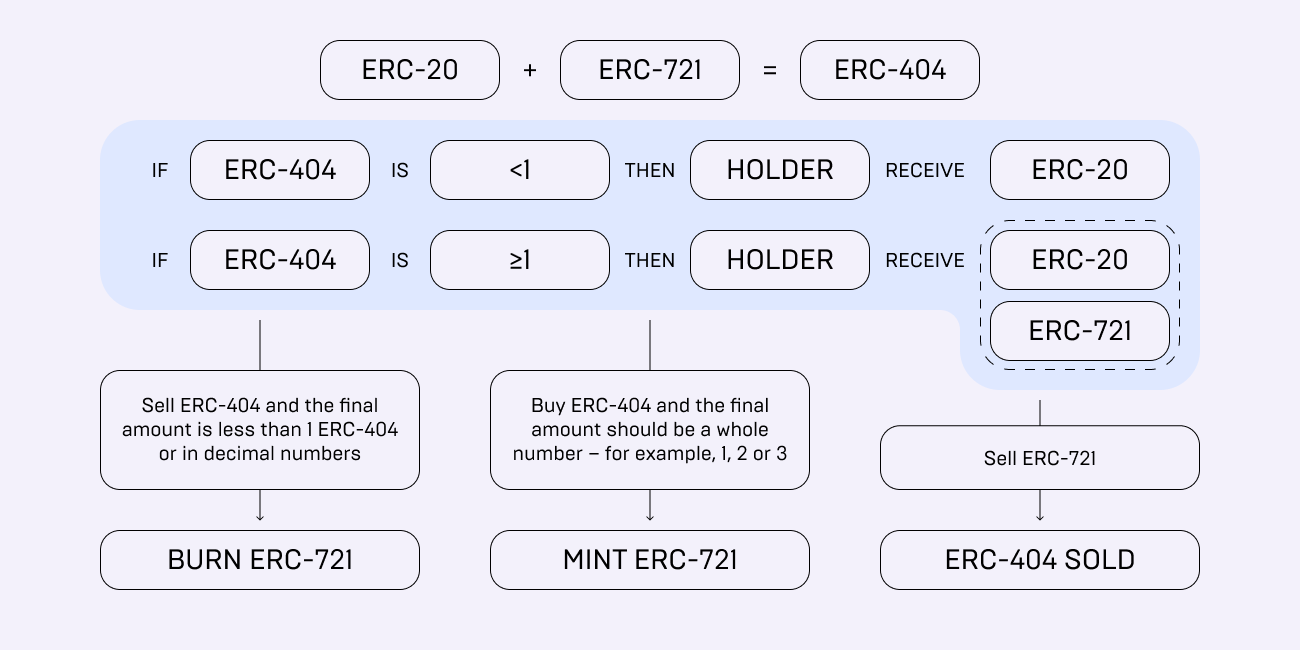
On the comparative range, the ERC-404 has a number of unique technical features that make it stand out against the originals it was developed based on, such as:
EIP (Ethereum Improvement Proposal)
In terms of EIP, ERC-404 does not have any, while both ERC-20 and ERC-721 have proposals for adoption through EIP-20 and EIP-721, respectively.
Asset Class
As an asset class, the ERC-404 is a fractionalized digital asset, while ERC-20 is a specific type of fungible digital asset, and ERC-721 is a class of unique digital assets.
Token IDs
There are no known token IDs for ERC-404 at this stage, similar to ERC-20, which also has none. In contrast, ERC-721 has a unique token ID for each asset.
Use Cases and Applications
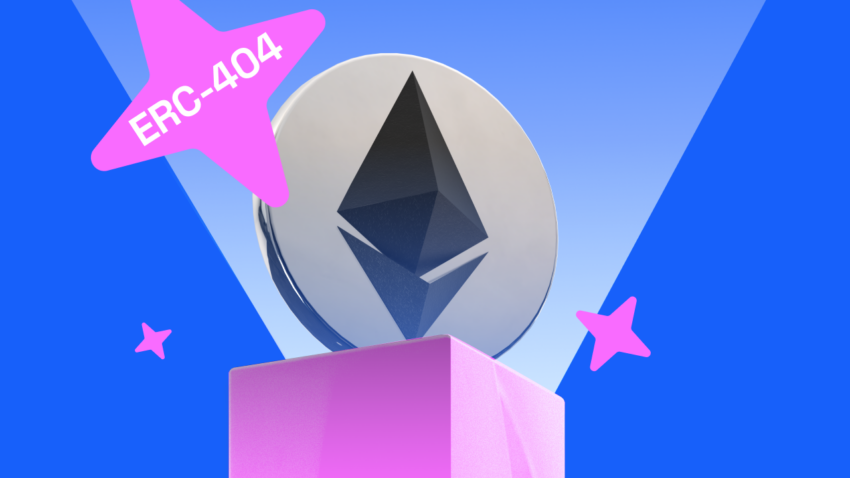
The biggest advantage of the ERC-404 standard is its potential use cases and applications across various industries. Some of the most promising areas being explored include:
• Tokenization of Assets
The tokenization of real-world assets (RWA) is a rapidly growing area in the Crypto and Blockchain Market. This new standard could enable fractional ownership of assets like real estate, art, equipment, and luxury items. This would lower the entry barrier for many retail investors and increase liquidity in these industries.
• DeFi
Lending, borrowing, and yield farming could benefit from the ERC-404 standard, as it would introduce new types of assets for use as collateral. The fractionalization of assets would also allow participants to break down the value of portfolios and liquidate them to generate additional income through sales or lending.
• Gaming and NFTs
Asset ownership, transferability, and interoperability are key benefits of using ERC-404 in the gaming and NFT sectors. This new standard would let developers fractionalize in-game assets, creating new gameplay mechanics and improving virtual economies. The NFT sector would also benefit by allowing more users to participate in collection ownership and trading.
• Supply Chain Management
Transparency, Verification, and Efficiency in supply chain management are crucial aspects that ERC-404 could improve by simplifying the issuance of unique IDs to various supplies. Linking fractionalized NFTs to a single original could help trace product origins, while burn mechanics can be invaluable for ensuring efficient storage of perishables.
Examples of ERC-404 Projects
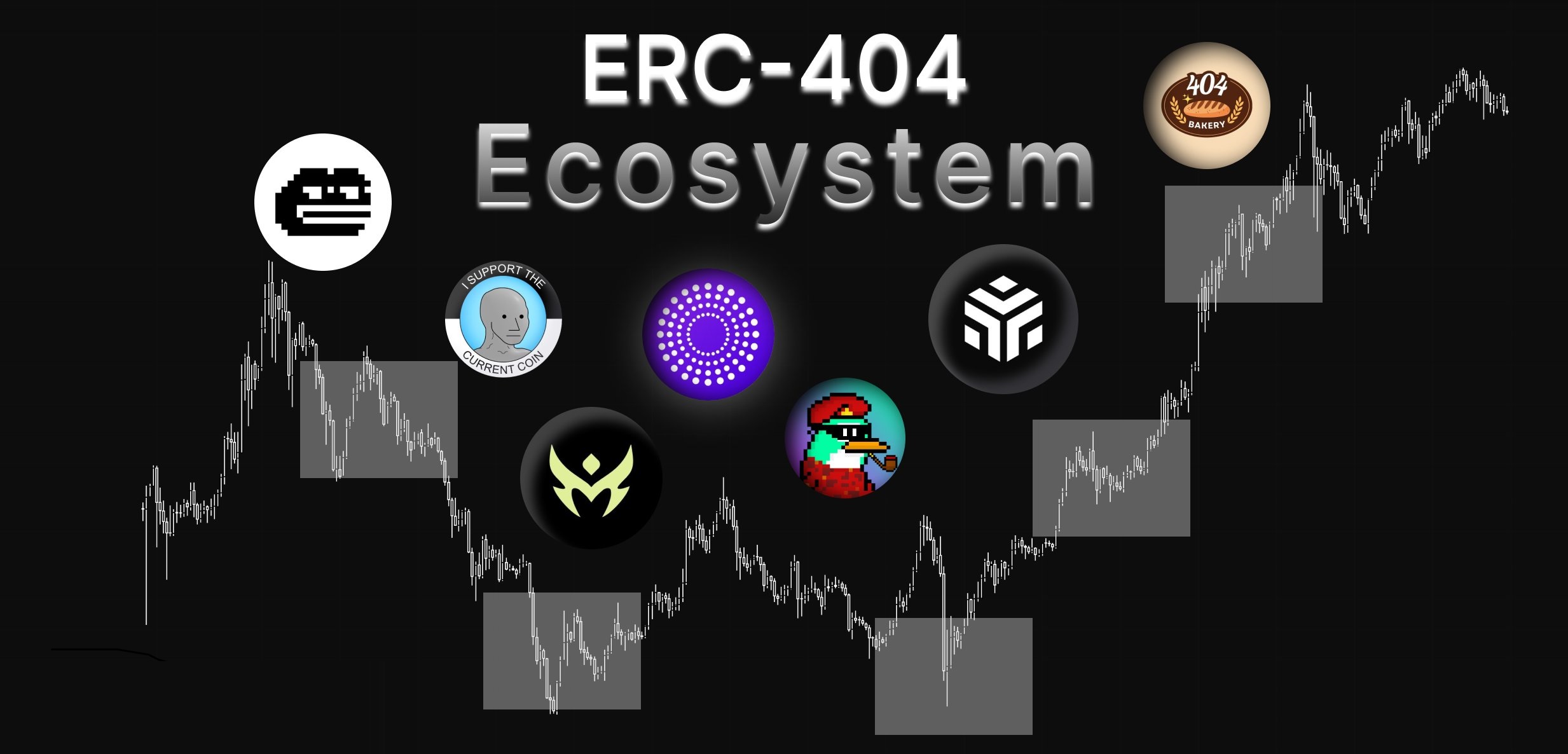
Among the notable projects that have gained recognition by leveraging the ERC-404 standard are the following:
Pandora
One the very first projects to use ERC-404 that are used for minting 10,000 Replicant NFTs, which are in turn linking to 10,000 ERC-20 tokens. Users receive a minted NFT on their wallets upon purchasing a PANDORA token.
DeFrogs
Another collection of NFTs with 10,000 Pepe the Frog. This project also uses a variation of the ERC-404 Token, labeled as the first ever ERC-404 PFP Collection – one that is supposedly using a deflationary model.
Monkees
Another PFP collection on the ERC-404 basis, which includes only 100 unique NFTs, each with ten special attributes and a combination of six traits.
Anon (ANON)
ANON addresses some of the original limitations of the ERC-404 standard by enhancing liquidity and rarity functionality. It represents an advancement in the NFT ecosystem, providing a new standard for blockchain technology with its approach to auction sales and asset transfers.
Rugged Art (RUG)
Originating from an NFT collection on Solana known as Flippies, Rug adopted the ERC-404 token model to feature pixelated penguins. This project highlights the flexibility of the ERC-404 standard across various blockchain ecosystems.
Challenges and Considerations
Since the ERC-404 standard is still experimental, several challenges need to be addressed before it can become mainstream. The first challenge is Developer Education. This is a lengthy process, and many qualified specialists will need training before more projects can start using the new standard.
Another challenge is the need for Mass Introduction of Technical Upgrades across blockchain networks and applications to ensure compatibility with ERC-404. Security Concerns also need to be addressed, as the potential flaws, exploits, or vulnerabilities of the new standard have not yet been fully analyzed. Most importantly, the new standard carries an element of systemic risk, as it is uncertain how markets will react to its deployment, potentially reducing predictability.
Conclusion
The ERC-404 is an innovative token standard that promises to advance the development of NFTs, speeding up ownership and expanding their use cases. The potential for increasing liquidity and broadening applications in areas like gaming, real-world asset tokenization, DeFi, and more is clear, despite the existing challenges that ongoing development is sure to address. The potential of ERC-404 Tokens offers many opportunities for projects that can creatively use their technical features. This is a great chance for more users to explore ERC-404, join relevant blockchain communities, and experiment with implementing or interacting with ERC-404-based contracts.
The development team emphasizes that while ERC-20 and ERC-721 aren't meant to be combined, their implementation aims to do so effectively while minimizing drawbacks, even though it is considered a "non-standard" implementation of ERC-721. Because it is unofficial, many NFT platforms and marketplaces do not support ERC-404 by default. The team plans to submit ERC-404 as an official Ethereum Improvement Proposal, but this process may take time. However, their decision to bypass the standard approval process could set a precedent for other projects, potentially leading to more unaudited token standards entering the market, posing risks to users.
The promise of ERC-404 goes beyond its technical features; it marks a shift towards a more inclusive and dynamic digital economy. By enabling fractional ownership and improving liquidity, ERC-404 tokens open up new opportunities for investors, creators, and users, creating a lively marketplace with diverse and accessible digital assets. The impact of ERC-404 on decentralized finance (DeFi) is especially exciting. By allowing more complex and flexible token interactions, ERC-404 sets the stage for innovative DeFi applications, from fractional investment platforms to new lending models, increasing the utility and appeal of Ethereum-based tokens.
Subscribe to my newsletter
Read articles from Dhruv Srivastava directly inside your inbox. Subscribe to the newsletter, and don't miss out.
Written by

Dhruv Srivastava
Dhruv Srivastava
I am a third year undergrad student at the Indian Institute of Information Technology (IIIT) Bhagalpur, pursuing B.Tech in the field of Computer Science. I am focusing to learn some extra skills along with the theoretical knowledge attained through my chosen course, so that I can implement my theoretical knowledge in a much more enhanced way with the help of the skills learned in the practical world. I have been learning Web Development in the past one year along with Blockchain. I have tried to work on some personal projects such as Personalized Online Piano and a team project HnC. My team was amongst the Top 10 Teams selected for Regional round in Smart India Hackathon (SIH) 2022 from our college. Currently I am Pupil at Codeforces (Max Rating 1234) and a 3 Star Coder at Codechef (Max Rating 1648). I have been appointed at a few other positions in my college which include Coordinator of the Blockchain Club (Hashrate), Marketing Lead (GDSC).